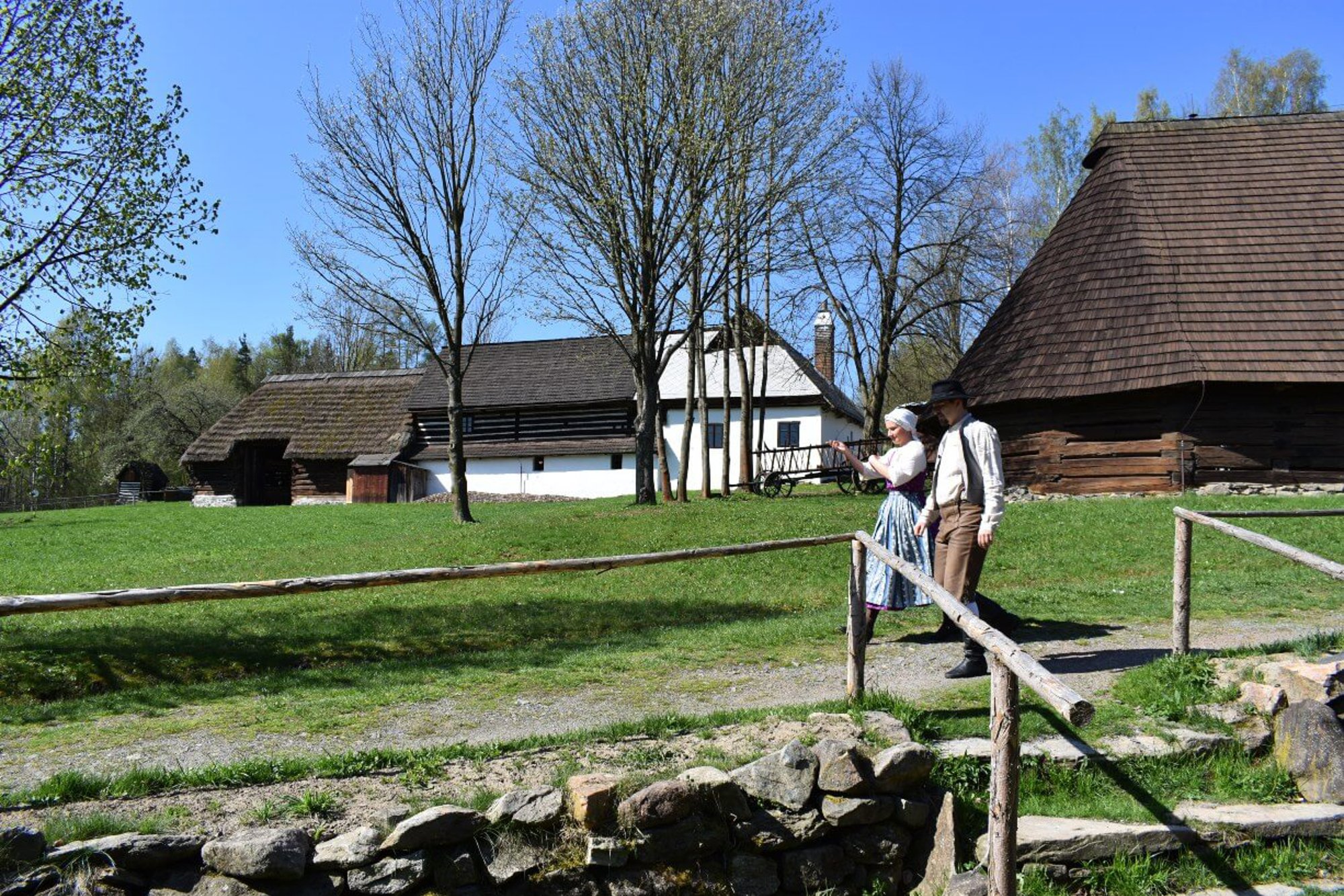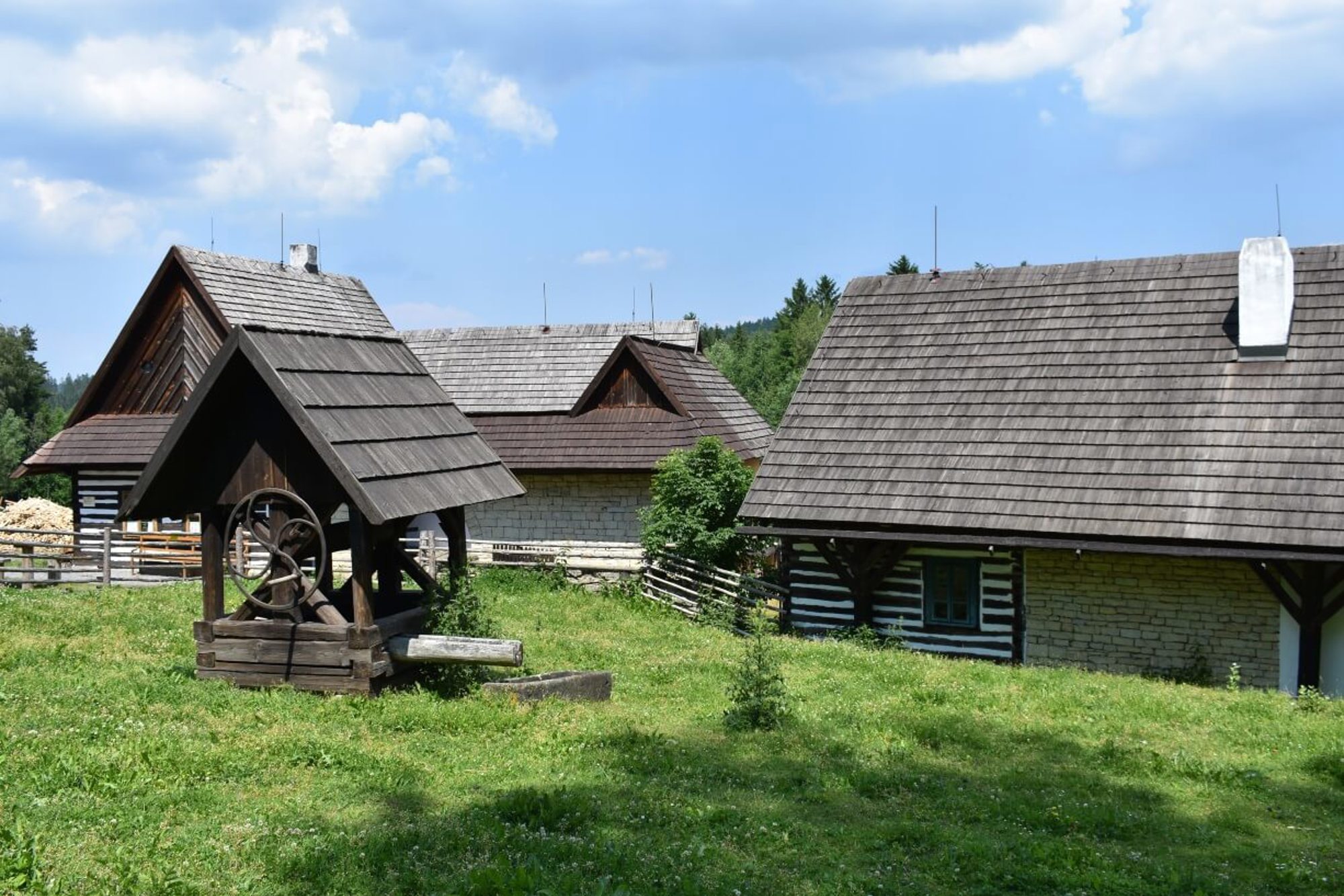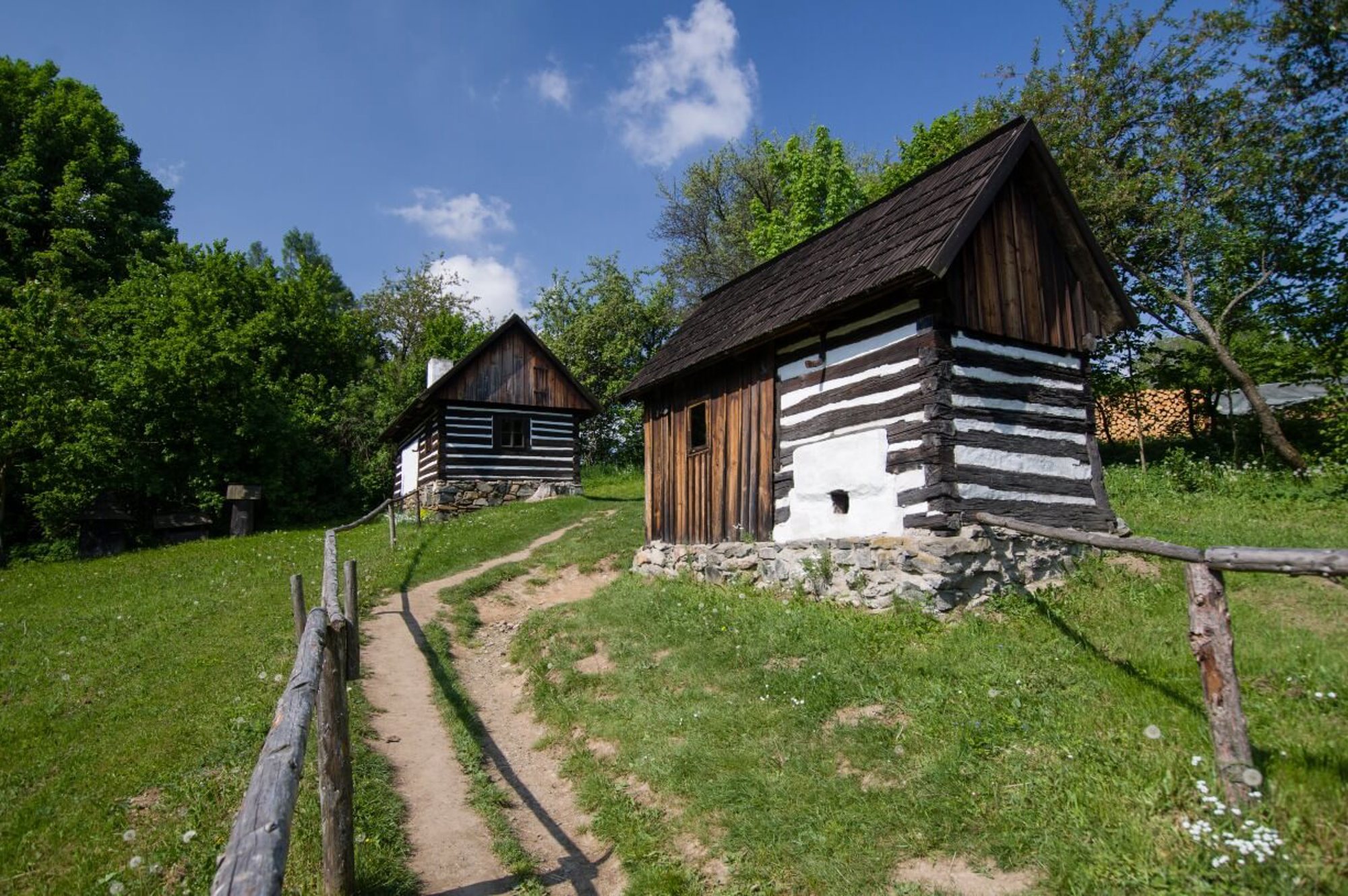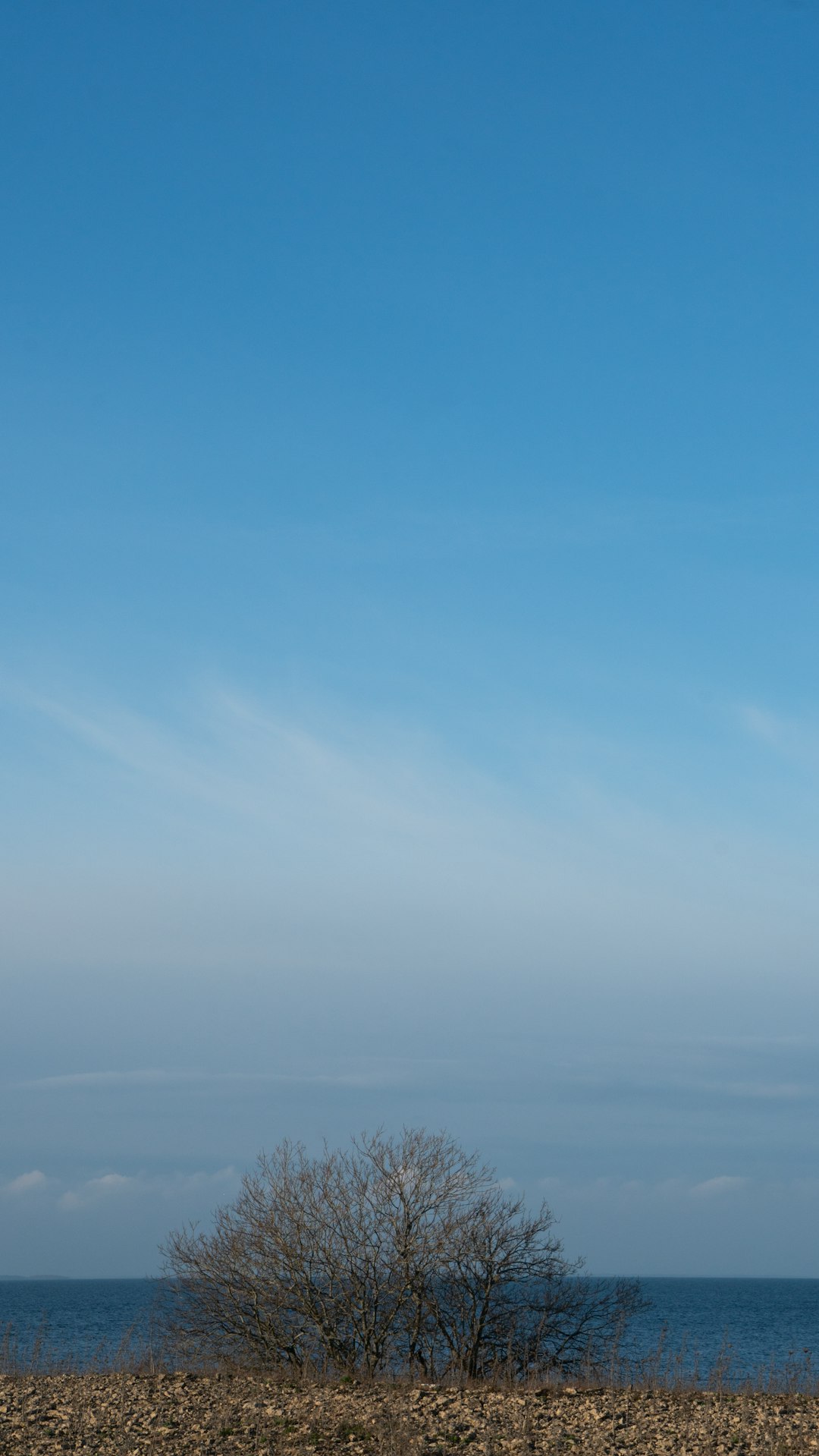In the foothills of the Ore Mountains lie numerous valuable treasures for filmmakers, such as timbered cottages with a weaving loom, barns with thatched roofs, granaries, sheepfolds, a carpentry workshop, and a chapel and a bell tower. There are also access roads, parking lots, electrical connections (220 V) and a friendly director. The natural areas at Vesely Kopec (Happy Hill) have already been used in the fairytales Lotrando a Zubejda, Nesmrtelna teta (Immortal Aunt), Tri zivoty (Three Lives), and the series Cirkus Humberto.
16. April 2021


Mid-19th to mid-20th century exteriors and interiors
Thirty authentic structures, some transferred here from surrounding areas, are spread throughout a rugged seven-hectare complex. They present traditional folk architecture, customs, and small farmsteads dating from the mid-19th to the mid-20th century. The objects are exceptional both for their architecture and their rich interior fittings that can be used for filming (with sensitivity).
Convenient technical facilities
There is one public road that leads through the complex; reinforced access roads to individual structures are intended primarily for pedestrians, but the primary exhibition structures are accessible by car.
A public car and bus parking lot operated by the municipality of Vysocina is 250 meters away. Parking for filming purposes can be arranged with the mayor and can even be arranged directly on-site for as long as is strictly necessary.
There is also electricity available (in most buildings 220 V, in three places 380 V - the entrance area, the central part of the complex, and the lower section with the water-powered technical monuments).
Props and extras on-site
At Vesely Kopec, filmmakers can shoot both exteriors and interiors, and basic equipment such as furniture, tools, and basic household furnishings and equipment can be used as props. If props will be used more heavily, filmmakers should arrange their own.

Residents in the surrounding areas are experienced extras who can also lend pets and other animals - even a horse and cart - for your film shoot.
Museum staff on hand to assist film crews
Authorized museum staff will be present for filming and can, if necessary and where possible, react operationally to the needs of the film crew.
At Vesely Kopec, filming can take place outdoors and indoors throughout the year, except for the Easter and Christmas exhibitions and a few days a year dedicated to extended programs.
Outside the high season (November, part of December, and January to mid-April), the buildings are partially cleared of furnishings, so filmmakers will need to arrange with the museum in advance if props are needed for the shoot.
Catering and accommodation
The complex includes a pub where refreshments and meals can be provided. Drinking water is also available in the entrance building, where there are also public toilets.
Crew accommodation is limited in the private pension directly at Vesely Kopec; otherwise accommodation is available in the town of Hlinsko, 8 km away.
Typical folk buildings and agriculture
At Vesely Kopec you will find typical agricultural farmsteads and small farms with furnished living spaces, with a weaving loom, “black kitchens” – an open firepit directly under a chimney where cooking took place (and still does today), and a chamber that has served not only to store supplies and clothes, but also to sleep.

There is a shed, a cowshed, and a granary, which was used as both for grain storage and a tool shed. You can also shoot in gamekeeper’s lodge and in the carpentry or the wheelwright’s workshops. The picturesque two-story chapel with a narthex and a nave still hosts weddings, and a bell tower, which previously served as a fire alarm, stands on the village green.
Exceptional architectural and technical monuments
At Vesely Kopec, in addition to typical folk buildings, you’ll find architectural treasures and unique technical monuments. These include a unique polygonal (14-sided) barn dating from 1680 – the only such preserved structure in the Czech Republic.
The water-powered saw dating back to 1854 was driven by a water wheel, and from 1934 onwards by a turbine. Linseed oil was pressed in the water-powered oil mill from the end of the 18th century until 1936. The local water mill is equipped with a jam production room and a barley grinder.
There is also a preserved bleachery where canvas was whitened by lye-dipping. There is also an 18th-century flax dryer or hemp-kiln, a fruit dryer, and an apiary with several kinds of hives.

If you are looking for a rural setting from the mid-19th to the mid-20th century for your next film, Vesely Kopec is looking forward to offering you a warm welcome.
Contact for filming in the Pardubice Region:
East Bohemia Film Office, Alena Horakova (a.horakova@vychodnicechy.info, +420 725 702 650)
